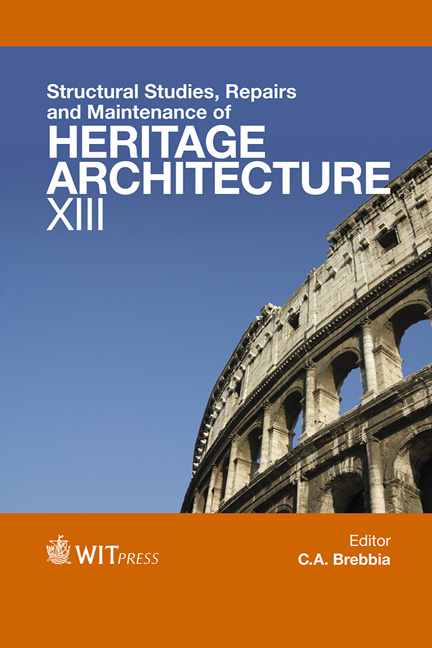The Artistic Heritage In The Deji Of Akure’s Palace
Price
Free (open access)
Transaction
Volume
131
Pages
12
Page Range
39 - 50
Published
2013
Size
1,306 kb
Paper DOI
10.2495/STR130041
Copyright
WIT Press
Author(s)
J. Igbaro & T. Y. Akinbileje
Abstract
Traditional African society was replete with art in the living environment. This was widely manifested in the architecture of the people of South-western Nigeria. The art practice traverses generations with the influence of each generation reflected in the Deji of Akure’s Palace, which culminated in its being declared a National Monument in 1989, by the Nigerian Government. The thrust of this paper is to highlight the socio-cultural, economic as well as the aesthetic values of the artistic elements on the Palace building, as it reflects on the whole community. The Palace is a complex of multiple structures that reflect the cultural orientation of the Yoruba, who, though they guarded their culture and tradition jealously yet, were able to accommodate positive influence from other cultures and modern civilization. The purpose of this study is to x-ray the intrinsic and extrinsic values of art to the socio-cultural development of the community, as manifested in their architecture. It is discovered that different factors influenced the development of art in the architecture of Deji’s Palace; these include traditional symbols and foreign influences (particularly Christianity, industrial revolution, Afro-Brazilian freed slaves and modern developments). It concludes that the Deji’s Palace is a mirror the realities the community has been exposed to; hence, its declaration as a National Monument. Keywords: symbols, socio-cultural, traditional, motifs, decoration, indigenous, icons, linear, courtyard, house posts.
Keywords
Keywords: symbols, socio-cultural, traditional, motifs, decoration, indigenous, icons, linear, courtyard, house posts.




